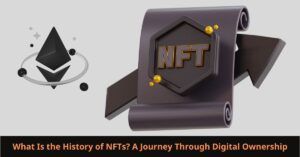Crypto gamification is an exciting development in the digital space that merges gaming elements with cryptocurrency systems, a combination sparking interest worldwide. This concept revolves around turning digital interactions into engaging experiences by incorporating elements like rewards, achievements, and leaderboards, all backed by crypto tokens. Imagine earning digital currencies while performing tasks or participating in activities online. It takes the concept of gamifying tasks to a new, decentralized level.
Blockchain technology plays a pivotal role in this transformation. It provides the foundational infrastructure that ensures secure, transparent, and verifiable transactions of digital rewards. Before blockchain, digital rewards systems were often centralized and less secure. With blockchain’s entry, these systems have become more open, offering users greater control and trust in their digital assets.
The journey to crypto gamification started with traditional gamification in business environments. Companies learned they could drive engagement by aligning tasks with rewards, like point systems or badges. As cryptocurrencies gained traction, the potential to blend these two ideas became apparent. The stakes changed when virtual coins entered the mix, adding real-world value to digital badges and incentives.
The benefits here go beyond just user engagement. Crypto gamification allows for the democratization of wealth distribution, making financial incentives accessible to a broader audience. It’s not just about playing games online and earning rewards—it’s about creating economic opportunities within these virtual environments. It’s an investment not just in the digital economy but also in fostering community and loyalty among users.
Mechanics and Dynamics of Crypto Gamified Platforms
Crypto gamified platforms are becoming increasingly popular due to their innovative blend of entertainment and monetary gain. These platforms are built on several core components that determine their effectiveness and user engagement. At the heart of any successful crypto game is a well-structured reward system—usually in the form of tokens or virtual currency—that encourages users to complete tasks, participate in activities, or engage with the content for a chance to earn rewards.
An excellent way to understand how these systems work is by looking at successful examples in the market. Platforms like Axie Infinity and Decentraland have paved the way by showing how dynamic and interactive a crypto-based platform can be, integrating elements that drive user interest and sustain involvement over time. These platforms employ a mix of skill, strategy, and perhaps most importantly, tokenomics—the economic system of a token supply and distribution within the platform.
Tokenomics is vital as it dictates the financial structure and potential earning capacity for users. It involves decisions around the issuance, circulation, and management of tokens within the ecosystem. A well-thought-out tokenomics model ensures that users feel justly compensated for their engagement while also maintaining the platform’s economic stability.
User experience remains a central factor in the success of these platforms. The user interface must be intuitive, and the experience seamless, to ensure it is accessible to broader audiences, not just crypto enthusiasts. This approachable design is crucial, as it determines how deeply users engage with the platform’s features and, in turn, contributes to the platform’s growth and sustainability.
Challenges and Criticisms in Crypto-Based Gamification
Crypto gamification is not without its hurdles, raising significant privacy concerns. Managing user data in a transparent yet secure manner is a complex task. Many platforms gather extensive data to tailor user experiences, which poses the risk of potential data breaches or misuse.
Addictive behaviors are another concern. The rewarding nature of these platforms can lead some users to excessive participation, overshadowing life’s other responsibilities. It’s important for users to remain mindful of their engagement levels and for platforms to implement safeguards, such as time limits or reminders.
Fraud and security issues also loom large in the crypto space. The digital nature of transactions makes them susceptible to hacks and fraud. Users need to stay informed about best practices for safeguarding their digital wallets, and platforms must ensure robust security protocols.
The regulatory landscape for crypto gamification remains murky. Differing laws and guidelines worldwide can complicate operations. Companies must remain vigilant in adhering to local regulations to avoid potential legal pitfalls. Meanwhile, ethical considerations around fair play and transparency demand ongoing attention, ensuring that users are treated fairly and that systems are not manipulated by bad actors.
The Future Prospects of Crypto Gamification
Tech innovation continues to be a driving force behind the evolution of crypto gamification, promising an exciting road ahead. Advancements in blockchain technology are leading to faster, more reliable transactions, while improvements in AI and VR are reshaping how users experience these digital worlds. As these technologies evolve, we can expect even more immersive and rewarding gameplay that captivates users.
The potential applications of crypto gamification extend far beyond gaming itself. Industries such as education, healthcare, and even corporate training are beginning to explore how gamified systems can enhance engagement and learning outcomes. By incorporating rewarding elements into these fields, crypto mechanics can provide innovative solutions to longstanding challenges.
Digital identity is poised to become more intertwined with crypto rewards. As people spend more time in virtual environments, the importance of a cohesive digital identity grows. These identities could one day act as the core for accessing varied services and opportunities in the digital economy, further incentivized by crypto rewards.
Looking ahead, it’s clear that crypto gamification will play a vital role in shaping digital ecosystems. Emerging trends, such as the integration of decentralized finance (DeFi) with gamified applications, hint at broader economic shifts. Staying informed and adaptable will be key for users and developers alike as new opportunities and challenges arise in this rapidly changing landscape.












